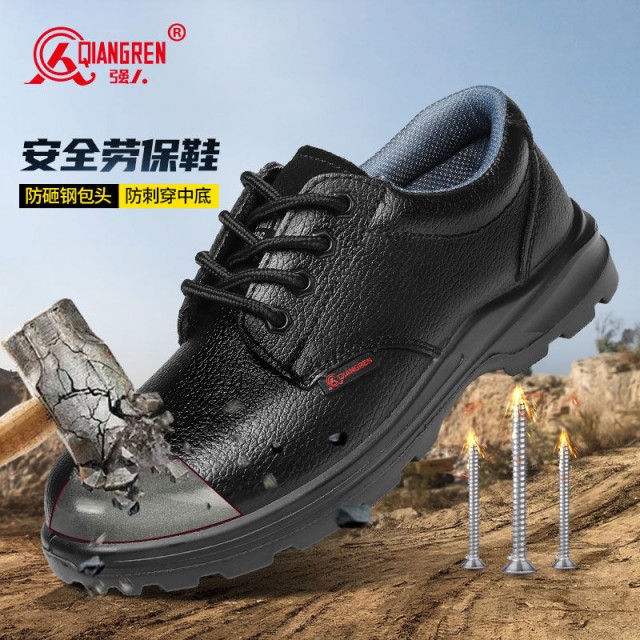Selecting the right safety toe boots isn’t just about compliance—it’s about matching protection to your daily work environment. Whether you’re navigating heavy machinery, electrical hazards, or extreme temperatures, the wrong choice can compromise safety and comfort. Here’s how to decide between steel-toe and composite-toe boots based on your job’s unique demands.
Steel-Toe vs. Composite-Toe Boots: Core Safety Features
Impact Protection and Weight Trade-Offs
Steel-toe boots use reinforced steel caps to meet ASTM F2413 standards for impact and compression resistance (withstanding ~75 ft-lbs of force and 2,500 lbs of pressure). They’re ideal for heavy industrial settings like construction or manufacturing, where crushing hazards are common. However, the added steel increases weight—often by over a pound per boot—which can cause fatigue during long shifts.
Composite-toe boots, made from materials like carbon fiber or plastic, provide comparable ASTM-certified protection but are up to 30% lighter. While they match steel in compression resistance, some models may offer slightly less impact protection. For workers prioritizing mobility (e.g., warehouse staff or landscapers), the weight savings often justify the trade-off.
Thermal Insulation and Environmental Adaptability
Steel conducts temperature extremes: toes freeze in cold weather and overheat near furnaces or molten materials. Composite toes, however, are temperature-neutral. They’re safer for electrical work (non-conductive) and better suited for:
- Cold environments: Oil rigs, refrigerated warehouses
- Heat-prone areas: Foundries, asphalt paving
- Security-sensitive zones: Airports (metal detector-friendly)
Matching Boot Type to Your Job Site
Heavy Industrial vs. Temperature-Sensitive Settings
Choose steel-toe boots if:
- Your work involves heavy falling objects (e.g., logging, steel fabrication).
- You need maximum durability against abrasion or punctures (e.g., demolition).
Opt for composite-toe boots if:
- You’re exposed to live electrical circuits (e.g., utility linemen).
- Your job requires passing through metal detectors (e.g., aerospace or prison staff).
Airport and Security-Sensitive Environments
Composite toes are the clear choice for airport personnel or government facilities where metal-free footwear is mandatory. They eliminate pat-down delays and comply with TSA guidelines while still meeting OSHA 1910.136 safety requirements.
Beyond the Toe: Compliance and Hidden Safety Features
ASTM Standards and Electrical Hazard Ratings
Both boot types meet ASTM F2413, but check for additional certifications:
- EH-rated boots: Protect against open circuits (common in composite styles).
- Slip-resistant soles: Essential for food service or oil/gas workers.
- Metatarsal guards: Found in some steel-toe models for extra ankle protection.
Slip Resistance and Long-Term Durability
A 2021 study of warehouse slips found that boots with oil-resistant outsoles reduced falls by ~40%. Look for:
- Deep tread patterns: For wet or greasy surfaces.
- Non-marking soles: Required in healthcare or cleanrooms.
Steel-toe boots typically last longer in high-abrasion settings, but composite models now use advanced polymers that rival their durability without the weight penalty.
Ready to Equip Your Team with the Right Safety Boots?
At 3515, we manufacture OSHA- and ASTM-compliant steel-toe and composite-toe boots tailored to your industry’s risks—from electrical hazards to extreme temperatures. Whether you’re a distributor, brand owner, or bulk buyer, our footwear solutions balance protection, comfort, and compliance. [Contact 3515] today to discuss custom safety footwear for your workforce.
Still unsure which toe type fits your job? Ask us about hybrid designs that combine the best of both technologies.
Products You Might Be Looking For:
Explore customizable steel-toe work boots
Related Products
- Wholesale Customizable Suede Safety Boots - Puncture-Proof with Velcro Closure
- Puncture-Resistant Velcro Safety Boots for Wholesale & Custom Manufacturing
- Customizable Anti-Smash Safety Boots for Wholesale & Private Label Manufacturing
- Wholesale Safety Footwear Manufacturer for Bulk & Custom OEM Orders
- Athletic Safety Shoes with Dial Closure & Steel Toe for Wholesale & Custom Manufacturing
Related Articles
- How to Choose Work Boots That Balance Safety, Comfort, and Durability for Your Job
- How to Choose Work Boots That Match Your Job Demands and Safety Needs
- Work Boots vs. Western Boots: How to Choose the Right Footwear for Labor Safety
- How to Choose Work Boots That Match Your Industry's Safety Needs
- How to Choose Work Boots That Match Your Job's Safety Demands



















